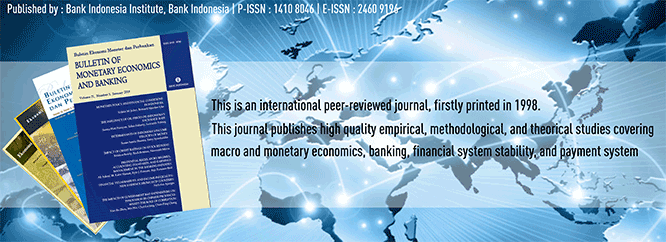
Document Type
Article
Abstract
Bank Indonesia has applied the Inflation Targeting Framework (ITF) to reach its single-final objective; stabilizing Rupiah reflected in the inflation and its exchange rate. The central bank of Indonesia uses the interest rate as his operational target to achieve the targeted inflation. Regardless of whether Bank Indonesia uses the Certificate of Bank Indonesia (SBI) or the money market rate (PUAB), on empirical ground the targeted inflation is hard to achieve.This paper analyzes the monetary policy of Bank Indonesia and its impact on macroeconomic variables. The application of Differenced Vector Autoregressive (DVAR) method shows that the monetary policy has a direct impact on the time deposit rate and an indirect impact on the exchange rate, money supply, gross domestic product and on consumer’s price index.JEL Classification: C32, E52, E58Keywords: SBI Interest Rate Mechanism, DVAR, IRF, FEVD
Recommended Citation
Banjarnahor, Nova Riana
(2008)
"MEKANISME SUKU BUNGA SBI SEBAGAI SASARAN OPERASIONAL KEBIJAKAN MONETER DAN VARIABEL MAKROEKONOMI INDONESIA: 1990.1 - 2007.4,"
Bulletin of Monetary Economics and Banking: Vol. 11:
No.
1, Article 2.
DOI: https://doi.org/10.21098/bemp.v11i1.234
Available at:
https://bulletin.bmeb-bi.org/bmeb/vol11/iss1/2
First Page
21
Last Page
52
Creative Commons License

This work is licensed under a Creative Commons Attribution-NonCommercial 4.0 International License
Country
Indonesia
Affiliation
Gadjah Mada University

